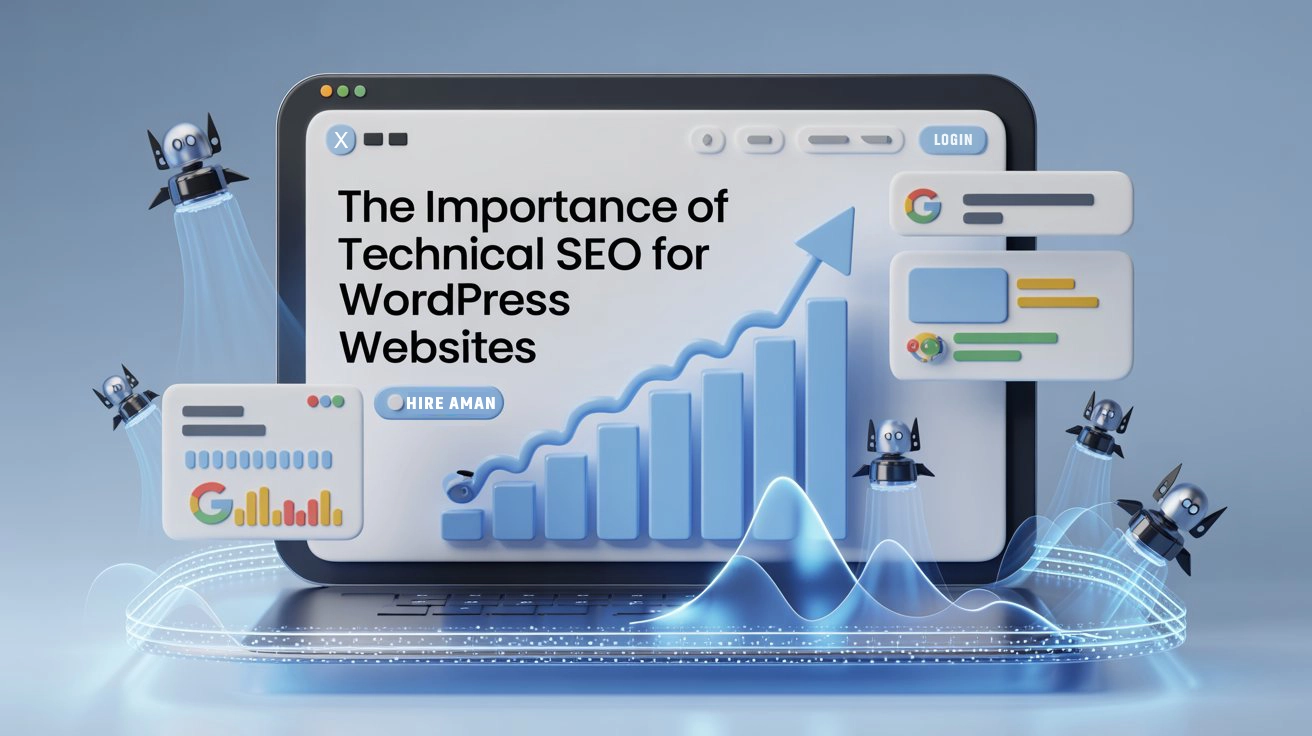Introduction
What is SEO?
SEO, or Search Engine Optimization, is all about tweaking your website to help search engines like Google better comprehend your content and present it to users when they search for related topics. You can think of it as putting up helpful signposts along the internet highway that guide people to your site.
Why SEO Matters for Websites in 2025?
With over 1.9 billion websites floating around in 2025, simply having a site up isn’t enough. To ensure potential customers or readers find you, SEO is crucial. SEO helps:
- Drive organic (free) traffic
- Enhance credibility and trustworthiness
- Provide better user experiences
- Increase conversions and sales
Whether you’re a blogger, small business owner, freelancer, or startup founder, these beginner SEO tips will set you up for success.
What You'll Learn
This guide is packed with SEO tips for beginners—you’ll learn about on-page and off-page optimization, real examples, tools to use, common mistakes to avoid, and much more.
What is Search Engine Optimization (SEO)?
SEO can be divided into three main categories:
1. On-Page SEO
This involves optimizing the content on your website. Things to consider:
- Naturally using target keywords
- Fine-tuning titles, meta descriptions, and headers
- Image optimization (size, alt text)
- Internal links
2. Off-Page SEO
Off-page SEO is all about boosting your website’s authority and reputation. This includes:
- Earning backlinks from other sites
- Engaging with social media signals
- Guest blogging and being mentioned by influencers
3. Technical SEO
Technical SEO ensures that search engines can efficiently crawl and index your website:
- Speedy loading times
- Mobile-friendly design
- SSL certification (HTTPS)
- A clean, crawlable site layout
How Google Ranks Websites
Google considers hundreds of factors when ranking websites, but some key elements include:
- Content relevance
- Page speed and mobile usability
- Backlinks and overall authority
- User experience metrics (like bounce rates and engagement)
- Security (SSL)
Step-by-Step SEO Tips for Beginners
Let’s jump into some actionable SEO tips that can help get your site ranked higher on Google.
Step 1:- Do Proper Keyword Research
Before you start crafting content, grasp what your audience is searching for.
Free Tools to Consider:
- Google Keyword Planner – Ideal for finding keywords and their search volume
- Ubersuggest – Great for keyword ideas and competition insights
- AnswerThePublic – Aids in uncovering commonly asked questions
Pro Tip: Aim for long-tail keywords (3-4 words) with medium search volume and low competition.
Step 2:- Optimize Titles, Meta Descriptions, & Content
Make sure your main keyword appears in the title and within the first 100 words of your content.
Craft appealing meta descriptions (keep it under 160 characters) and utilize subheadings (H2, H3) to break up your content, including keywords in a natural way.
Step 3:- Create High-Quality, Valuable Content
Content is king. Aim to produce posts that:
- Solve users’ problems
- Answer specific questions
- Are well-organized and easy to navigate
- Include multimedia like images and videos
Remember: Google favors content that delivers real value and keeps visitors engaged.
Step 4- Optimize Images
Large images can bog down your website.
Utilize compressed images (like WebP or JPEG), add alt text featuring your keywords (good for SEO and accessibility), and rename image files descriptively (for example, seo-tips-beginners.jpg).
Step 5:- Make URLs SEO-Friendly
Keep your URLs short and full of keywords.
Bad URL: yoursite.com/page123?=seo
Good URL: yoursite.com/seo-tips-for-beginners
Step 6:- Internal Linking Strategies
Linking to other relevant pages on your site helps Google understand your content’s structure.
Use descriptive anchor texts, link to pertinent blog posts or product pages, and consider creating a content hub with pillar and cluster pages.
Step 7:- Mobile Responsiveness and Page Speed
Step 8:- SSL and Website Security
Step 9:- Use Proper Header Tags (H1 to H6)
Step 10:- Build Backlinks (Off-Page SEO)
Step 11:- Submit Your Site to Google Search Console
Step 12:- Track Performance with Google Analytics
Get a grip on what’s working and what’s not.
Set up GA4 tracking and keep an eye on bounce rates, session durations, and traffic sources.
SEO tip for beginners: Continuously adjust your strategy based on this data.
Common SEO Mistakes to Avoid
1. Keyword Stuffing
Avoid overusing the same keyword as it can make your content hard to read and may get penalized by Google.
2. Ignoring Mobile Optimization
If your site isn’t optimized for mobile, you’re missing out on a significant amount of traffic and rankings.
3. Not Using Analytics
4. Not Updating Old Content
Google loves fresh content. Go back to old blog posts and refresh them with updated information, images, or internal links.
5. Ignoring Image Optimization
Large images can slow your site down and harm your rankings.
Free SEO Tools for Beginners
Google Search Console
Google Analytics (GA4)
Google PageSpeed Insights
Ubersuggest
Answer The Public
Quora
FAQ
(Commonly asked Questions)
Start with Google Search Console, Google Analytics, and Ubersuggest. These tools are beginner-friendly and cost-free
SEO is a long-term strategy. You might start seeing results in 3-6 months, depending on factors like competition and content quality.
Absolutely! With the right resources and guidance, many beginners can successfully optimize their own sites.
Both are critical. Great content brings people to your site, while backlinks help establish authority and trust.
Definitely! SEO remains one of the most cost-effective and sustainable ways to consistently drive traffic over time.
Use customer data to build great and solid product experiences that convert .
Get the book for free
Conclusion
While SEO may appear daunting at first, following these beginner tips will set you on the right track for ranking your website on Google. From keyword research to on-page optimization and tracking analytics, every step builds a stronger foundation for your online presence.
Don’t feel pressured to master it all at once. Start small, keep learning, and be consistent.



